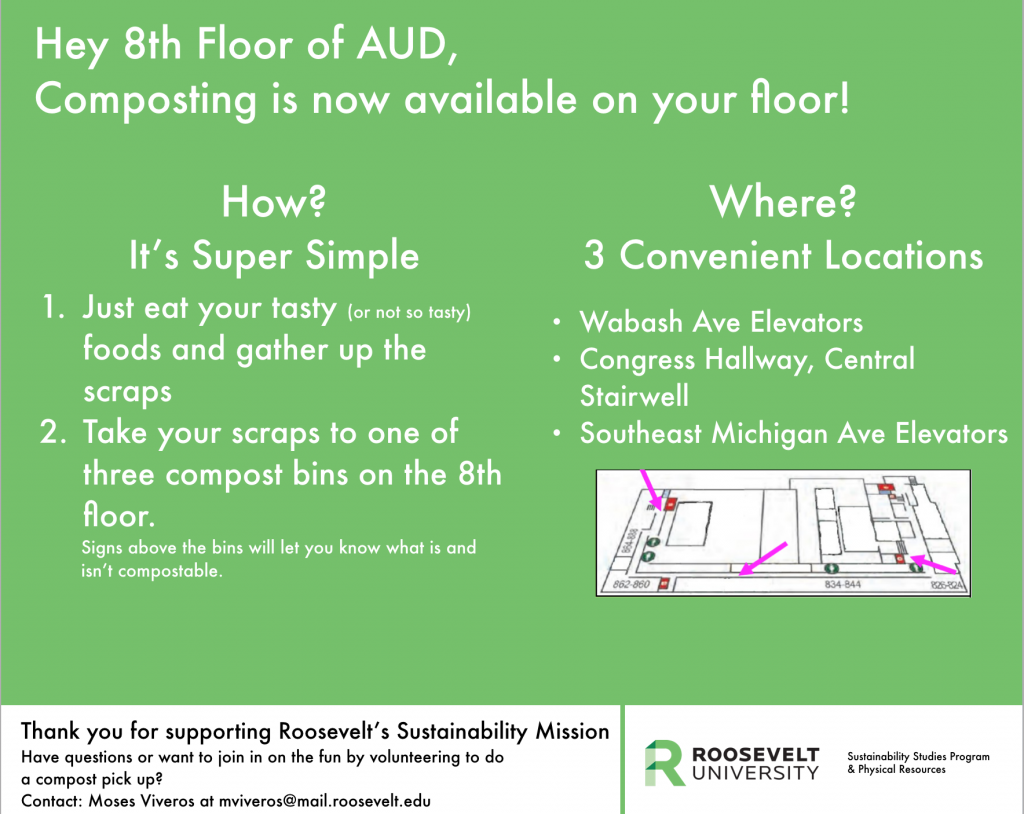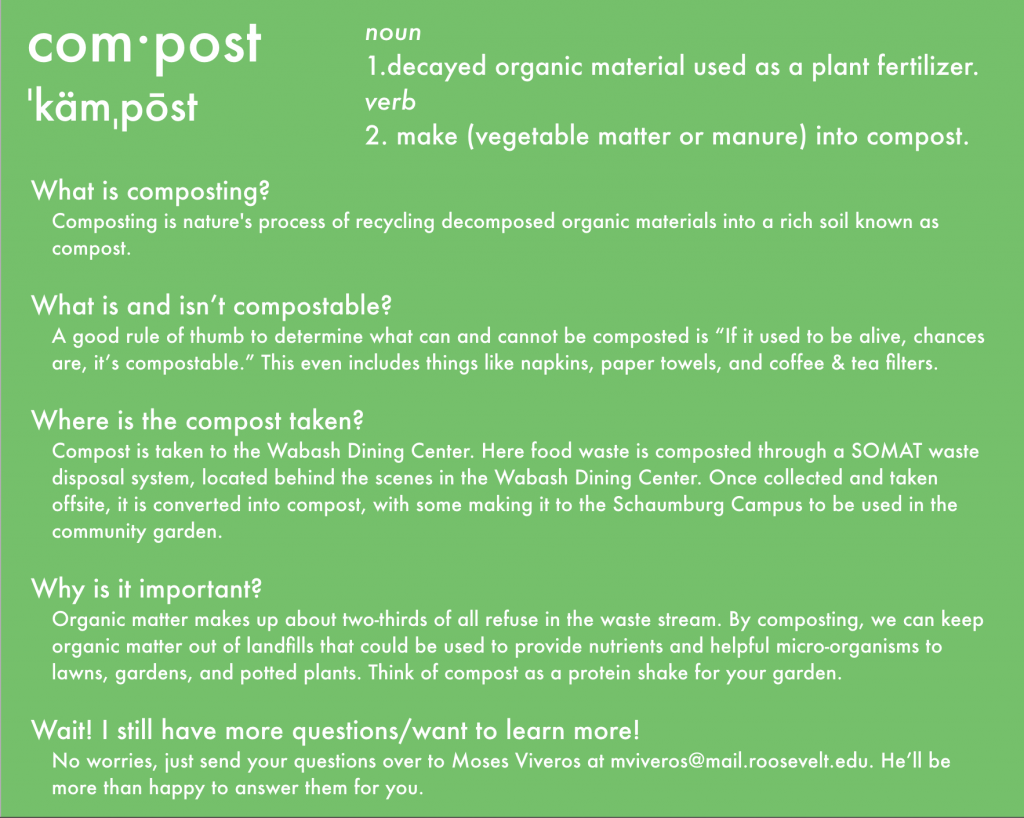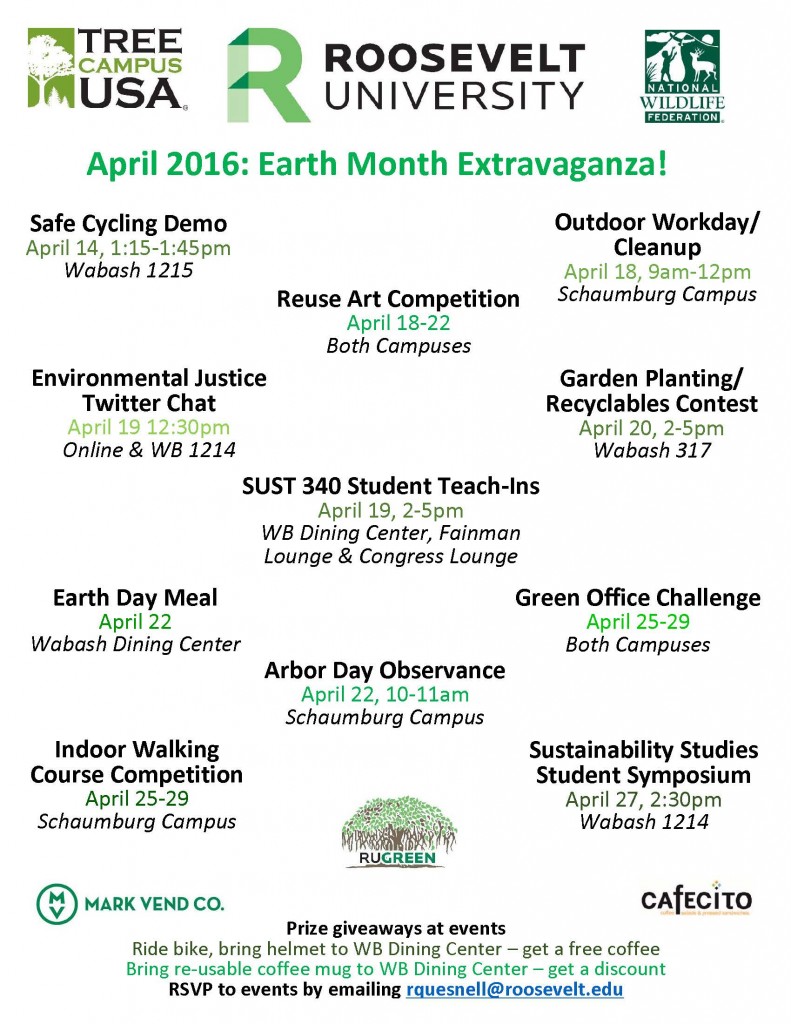Category: Students
All I Want for the Holidays is a MAP Grant
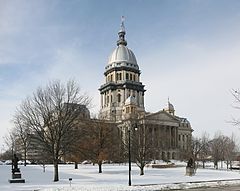 To the Roosevelt University Community: please help pressure our Illinois legislators to fund MAP grants for our students!
To the Roosevelt University Community: please help pressure our Illinois legislators to fund MAP grants for our students!
On Wednesday, Dec. 14, from 11:30 a.m. to 2:30 p.m. during the Winter Brunch, please stop by and sign the “All I Want for the Holidays is a MAP Grant” banner. Take a selfie and post to social media with #MAPMatters. We will share images of this signed banner with our state representatives and senators.
Thank you for your advocacy efforts!
For more information, contact Jennifer Tani, Assistant Vice President, Community Engagement (jtani@roosevelt.edu).
Register @RooseveltU for Spring & Summer 2017 Classes
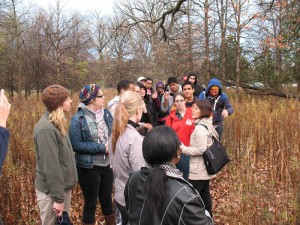
Advising and registration are now ongoing (since Nov 1st) for the Spring & Summer 2017 semesters here at @RooseveltU. Undergraduate students, please look over the Spring 2017 schedule using this coursefinder, check remaining course requirements on your curriculum checksheet, and email or call your assigned academic advisor with your planned schedule and any questions you have about your upcoming classes. Your advisor will provide you with an RU Access registration code so you can register.
Sustainability Studies courses offered in Spring 2017:
ACP 110 Primary Texts (MW 11am-12:15pm, Bryson)*
SUST 210 Sustainable Future (14-week online, Pickren)
SUST 220 Water (8-week online, 1/17-3/10, Bryson)§
SUST 230 Food (M 2-4:30pm)
SUST 240 Waste (14-week online, Pickren)
SUST/ACP 250 The Sustainable University (W 2-4:30pm, Bryson)◊
SUST 310 Energy & Climate Change (8-week online, 3/20-5/12)§
SUST 320 Sprawl, Transportation, & Planning (Th 2-4:30pm, Pickren)
SUST 340 Policy, Law, & Ethics (14-week online)
SUST 395 Sustainability Studies Internship (by arrangement)
* First Year Seminars are open to new full-time undergrads with 12 or fewer hours in transfer credit.
§ These 8-week accelerated online courses are open to all students and synced with the Flex-Track adult degree calendar. They may be taken back-to-back.
◊ Students may register for either ACP 250 (Grounds for Change credit) or SUST 250 (Sustainability Studies credit).
Sustainability Studies courses offered in Summer 2017:
SUST 210 Sustainable Future (12-week online, 5/30-8/8, Pickren)
SUST 390 Writing Urban Nature (1-week intensive, 5/22-26, Bryson)
November is a super busy time of the academic year, but be sure to make a little time to get in touch with your advisor to sign up for the classes you need. For additional useful info, see this Advising Resources page on this website.
Part-time Student Sustainability Position Available in RU’s Physical Resources, Chicago Campus
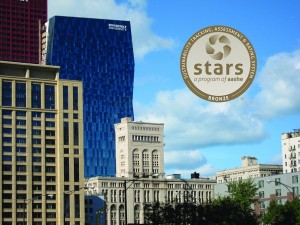 The RU Physical Resources Department is offering a paid student internship/work-study position for the 2016-17 academic year. This job is an outstanding professional development opportunity and involves working directly with the RU Physical Resources Team under the direction of Paul Matthews, Assistant VP for Campus Planning/Operations. The internship is based primarily at the Chicago Campus, Applications are being accepted ASAP (see details below) until the position is filled.
The RU Physical Resources Department is offering a paid student internship/work-study position for the 2016-17 academic year. This job is an outstanding professional development opportunity and involves working directly with the RU Physical Resources Team under the direction of Paul Matthews, Assistant VP for Campus Planning/Operations. The internship is based primarily at the Chicago Campus, Applications are being accepted ASAP (see details below) until the position is filled.
Duties and responsibilities include:
- Assist in implementing the newly adopted Sustainability Strategic Plan, approved in Spring 2015
- Help maintain and update of the RU Green Campus website, Green Campus Blog, and associated social media pages to provide other information which may benefit and educate the RU community about environmental sustainability
- Help manage the Chicago Campus Rooftop Garden
- Assist in maintaining contact with associations and government sponsored agencies that support the Physical Resources Environmental Sustainability Initiatives, including: Association for the Advancement for Sustainability within Higher Education (AASHE), United States Green Building Council, Second Nature, World Wildlife Federation, EPA Green Power Partnership Program, and the Illinois Governor’s Campus Sustainability Compact
- Participate in DCEO Recycling Grant Reporting; Recycling Project for AUD, Field House, and Wabash (with 50% diversion goal); and university Compost Agreement, which provides materials for Schaumburg Garden Plots
- Help prepare PowerPoint presentations on select ES topics to present to the RU Community when necessary.
- Attend RU-based meetings that deal with the United States Green Building Council (USGBC) Leadership thru Energy and Environmental Design (LEED) Certification Program for the Wabash Vertical Campus, Field House, and other major construction projects. Assist in tracking the LEED credits for certification and green building construction, and in achieving USGBC LEED Silver level for Field House.
- Work on Physical Resource plans or initiatives that center around green technologies, landscapes, hardscapes, alternate methods of transportation, and renewable energy sources.
To Indicate Interest and Get More Information: Contact Paul Matthews, Assistant VP of Operations/Planning, Department of Physical Resources, Roosevelt University, at 312-341-3600 (office) or pmatthews@roosevelt.edu (email). This position does not require federal work-study status, but may qualify as a work-study position for those with that designation. See the Career Resources page on RU’s website to apply.
SUST Program Student Associate Position Available for 2016-17
For the first time, the SUST Program at RU has a student associate (work-study) position available for the 2016-17 academic year, starting 29 Aug 2016 and ending 8 May 2017. This position is for 12 hours/week at the Chicago Campus and earns $10.50/hour. Undergraduate students must be enrolled in 6 credit hours (F16) and graduate student 3 credit hours to be eligible. The position is open to all RU students, but SUST majors will receive priority consideration.
Position Description
This student associate position for the Sustainability Studies Program within the College of Arts & Sciences reports directly to Dr. Mike Bryson, SUST professor and director. Primary duties include but are not limited to:
- outreach to current students and alumni on behalf of the SUST program
- social media research, writing, and editing (SUST at RU blog, Twitter, Facebook, and LinkedIn)
- contribution to campus sustainability projects in coordination with the RUSLab, Operations & Planning within the Department of Physical Resources, and the RU Green student organization
- event planning and coordination, including the SUST Student Symposium in fall and spring, and Earth Month campus activities in April 2017
- completion of other tasks to advance RU’s Strategic Sustainability Plan and support the SUST Program’s mission
The student associate will acquire and polish multiple professional skills as well as gain valuable experience in sustainability education, outreach, planning, communication, and collaboration. Applicants will be assessed according to their academic record, relevant work experience, writing/communication skills, and ability to work both independently as well as collaboratively. Office space provided in AUD 829, with additional access to the Roosevelt Urban Sustainability Lab in AUD 526. Hours are flexible and can be negotiated with the SUST director.
To Apply
Go to the Student Employment at Roosevelt webpage and click on Career Central. Follow the instructions to register as a student user if you have not already done so. Search for the position by typing in SUST in the search box, then follow the instructions for submitting your application. In addition to filling out the online application form, three supporting documents are required:
- a cover letter expressing your interest in and qualifications for the position
- a résumé summarizing your education and employment history, as well as your relevant skills/experience
- a writing sample that exemplifies your writing at its best (this can be something new or a paper you wrote for an RU class)
Application Deadline: applications will be reviewed starting immediately and continue through 24 August 2016. Position begins on 29 August or soon thereafter. All applications must come through the RU Student Employment website linked above.
Questions? Email Prof. Bryson (mbryson@roosevelt.edu) to discuss your interest in the position or to ask any questions about the application process.
SUST Symposium 3.1 (Spring 2016) Today at RU
Today, April 27th, is officially my favorite day of the semester: Symposium Day! Please join me at today’s Sustainability Studies Program at Roosevelt University for a special afternoon Symposium of student projects and research from 2:30-5:30pm in RU’s LEED Gold-certified Wabash Building at 425 S. Wabash Ave. in downtown Chicago (room 1214).
Students in Roosevelt’s SUST program will give presentations about their recent campus sustainability projects, internships, and research experiences in a forum that is open to all RU students, faculty, and staff as well as the general public. The Symposium also will be videoconferenced via Zoom, so you may attend online or by phone, if you wish (see below).
I’m exceedingly proud of all of these students and the work they’ve done this semester. Break a leg, everyone!
Featured Student Speakers
 Members of SUST 390 Sustainable Campus (honors) — From Plan to Action: Moving Sustainability Forward at RU
Members of SUST 390 Sustainable Campus (honors) — From Plan to Action: Moving Sustainability Forward at RU
Students in the Spring 2016 honors seminar “Sustainable Campus” will start our Symposium with a series of group presentations on their campus sustainability projects undertaken this spring to help advance RU’s Strategic Sustainability Plan across several fronts. Teams will discuss their initiatives in four areas: general education curriculum (Nicole Kasper & Kurt Witteman), food waste reduction (Michael Gobbel & Tom Smith), student orientation (Jessica Heinz, Claudia Remy, & Moses Viveros), and bottled water policy (Ashley Nesseler, Lacy Reyna, & Brandon Rohlwing). And if you think they look happy in this photo, wait until they’re done presenting today.
 Lindsey Sharp — A Key to Unlocking Species Diversity at Lolldaiga Ranch
Lindsey Sharp — A Key to Unlocking Species Diversity at Lolldaiga Ranch
Lindsey is a senior SUST major and returning adult student who was awarded the prestigious Travis Foundation Scholarship this fall at RU, a competitive award given to 16 students each year. The scholarship enabled her to continue her studies as well as pursue a Spring 2016 internship at the Field Museum of Natural History, which she reported on recently here. Her project focuses on the preparation and identification process of specimens collected during field research in the Eastern Province of Kenya. The results of the identification process were also analyzed in order to determine the area’s population of rodent species, which can be compared to earlier samples gathered from the area in order to determine changes in biodiversity over time. Her talk will discuss her everyday work at the lab in the larger context of mammal ecology, biodiversity conservation, and the value of museum collections research.
 Cassidy Avent — Summer at SCARCE: An Environmental Education Internship Experience
Cassidy Avent — Summer at SCARCE: An Environmental Education Internship Experience
Throughout the summer of 2015, SUST senior Cassidy Avent had the opportunity to work as an intern for an environmental NGO known as School and Community Assistance for Recycling and Composting Education (SCARCE). Her summer included working at the SCARCE office in Glen Ellyn IL, giving environmental education presentations at schools and community events, participating in teacher workshops, and many other fulfilling activities. Within this presentation she discusses her experience at SCARCE along with all of the valuable information and insights she gathered while interning at such a fascinating place.
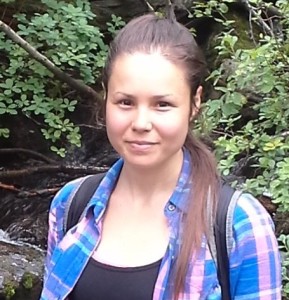 Tiffany Mucci — Midewin: One Land’s Story of Recovery and Renewal
Tiffany Mucci — Midewin: One Land’s Story of Recovery and Renewal
SUST senior and returning adult student Tiffany Mucci, who has served as the Assistant Editor of the SUST at RU Blog this academic year, explores Midewin National Tallgrass Prairie as a living example of both the challenges we face in restoring and managing our native landscapes, and the resiliency of nature. Her presentation will highlight this site’s history as one of our nation’s most productive ordnance complexes to ever exist, and reveal its present-day designation as a protected tallgrass prairie ecosystem under the U.S. Forest Service. From seeding, to frogging, to corralling the newly-adopted buffalo of Midewin, she’ll relate what goes into “making a prairie” in the 21st century.
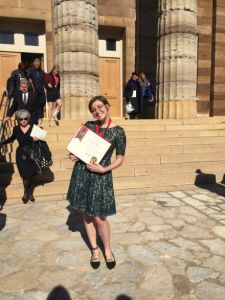 Lacy Reyna — Temporal Distribution of Bryophytes in Cook County, IL
Lacy Reyna — Temporal Distribution of Bryophytes in Cook County, IL
Senior science major and honors student Lacy Reyna, a double major in biology and psychology and RU’s 2015 Lincoln Laureate, worked in the botany division of the Field Museum while enrolled in the museum-based SUST 330 Biodiversity course this past fall with Lindsey. Using collections data from various institutions including the Field Museum, her research done in collaboration with FMNH scientists documents the shift in bryophyte species in Cook County across time. Her talk provides potential explanations for the shifts in species populations as well as discusses the importance of museum collections for biodiversity conservation.
Come join us to learn about and celebrate these students’ work! This event is free and refreshments are provided. Kindly RSVP to Mike Bryson (mbryson@roosevelt.edu) your plans to attend. Videoconferencing will be made available via Zoom. Hope to see you there! And if you need further incentive to attend, just check out past Symposia from 2013-15.
Essential Information
- Date / Time: Wednesday, Apr. 27th, 2015 / 2:30-5:45pm
- Agenda: Refreshments served and pleasant hobnobbing begins at 2pm; presentations start promptly at 2:30pm; event concludes ~ 5:30pm (with more chit-chat and eating)
- Place: RU’s Wabash Building, 425 S. Wabash Ave., Chicago IL, room 1214
- Zoom Videoconferencing: Can’t attend in person? See below!
- RSVP: SUST Director Mike Bryson (mbryson@roosevelt.edu)
Zoom Videoconference Information
- Join from PC, Mac, Linux, iOS or Android: https://roosevelt.zoom.us/j/368245293
- Or iPhone one-tap: 14086380968,368245293# or 16465588656,368245293#
- Or Telephone:
+1 877 369 0926 (US Toll Free) or +1 888 974 9888 (US Toll Free)
Meeting ID: 368 245 293
Links to past Symposia
- Symposium 1.1 (Fall 2013): Alison Breeding, Kyle Huff, Ron Taylor
- Symposium 1.2 (Spring 2014): Colleen Dennis, Jordan Ewbank, Mary Beth Radeck
- Symposium 2.1 (Spring 2015): Melanie Blume, Rebecca Quesnell, Mary Rasic, Emily Rhea
Earth Month at Roosevelt
This image is also available as a pdf. Also see RU’s Green Campus Blog for detailed info on the week’s many events and activities!
City Creatures: Wildlife in the City
 Tomorrow afternoon my SUST 340 Policy, Law, & Ethics class at Roosevelt University’s Chicago Campus proudly hosts a special presentation entitled “City Creatures: Urban Biodiversity in Chicago” at 3:30 p.m. in Roosevelt’s LEED-Gold Wabash Building, Room 1214. Dr. Gavin Van Horn of the Center for Humans and Nature will discuss his recent book, City Creatures: Animal Encounters in the Chicago Wilderness (University of Chicago Press), published in November 2015; and then engage in dialogue with my students and the RU community about urban biodiversity from the perspective of the environmental humanities.
Tomorrow afternoon my SUST 340 Policy, Law, & Ethics class at Roosevelt University’s Chicago Campus proudly hosts a special presentation entitled “City Creatures: Urban Biodiversity in Chicago” at 3:30 p.m. in Roosevelt’s LEED-Gold Wabash Building, Room 1214. Dr. Gavin Van Horn of the Center for Humans and Nature will discuss his recent book, City Creatures: Animal Encounters in the Chicago Wilderness (University of Chicago Press), published in November 2015; and then engage in dialogue with my students and the RU community about urban biodiversity from the perspective of the environmental humanities.
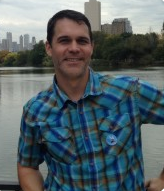 Dr. Van Horn is the co-editor of City Creatures and is the Director of Cultures of Conservation at the Center for Humans and Nature, as well as editor of the widely-read City Creatures blog. His work focuses particularly on how place-based values are developed and strengthened in dialogue with local landscapes. He continues to explore cultural perceptions of wildlife; place-based ethics; endangered species recovery, ethics, and policy; and the values involved in ecological restoration projects, community gardening, and wildlife management.
Dr. Van Horn is the co-editor of City Creatures and is the Director of Cultures of Conservation at the Center for Humans and Nature, as well as editor of the widely-read City Creatures blog. His work focuses particularly on how place-based values are developed and strengthened in dialogue with local landscapes. He continues to explore cultural perceptions of wildlife; place-based ethics; endangered species recovery, ethics, and policy; and the values involved in ecological restoration projects, community gardening, and wildlife management.
This special event is free and open to the public, and is hosted by students in SUST 340 Policy, Law, & Ethics. A limited number of signed copies will be available for purchase ($30 cash) and discount order forms will be available.
Videoconference Option: For those who cannot attend in person, the City Creatures event will be video- and teleconferenced live via Zoom as well as recorded, so that you may watch and/or listen from anywhere in the world. Login information is here:
Topic: City Creatures at RU Presentation 11 Apr 2016
Time: Apr 12, 2016 3:30 PM (GMT-5:00) Central Time (US and Canada)
- Join from PC, Mac, Linux, iOS or Android: https://roosevelt.zoom.us/j/111170694
- Or iPhone one-tap: 16465588656,111170694# or 14086380968,111170694#
- Or Telephone:
+1 877 369 0926 (US Toll Free)
+1 888 974 9888 (US Toll Free)
Meeting ID: 111 170 694
International numbers available: https://roosevelt.zoom.us/zoomconference?m=sRfRPmWGZFFr0xGI6lrJk6t13V5cLneM
More on City Creatures from The University of Chicago Press website:
We usually think of cities as the domain of humans—but we are just one of thousands of species that call the urban landscape home. Chicago residents knowingly move among familiar creatures like squirrels, pigeons, and dogs, but might be surprised to learn about all the leafhoppers and water bears, black-crowned night herons and bison, beavers and massasauga rattlesnakes that are living alongside them. City Creatures introduces readers to an astonishing diversity of urban wildlife with a unique and accessible mix of essays, poetry, paintings, and photographs.
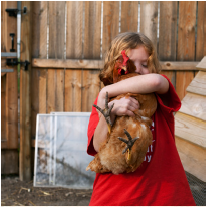 The contributors bring a story-based approach to this urban safari, taking readers on birding expeditions to the Magic Hedge at Montrose Harbor on the North Side, canoe trips down the South Fork of the Chicago River (better known as Bubbly Creek), and insect-collecting forays or restoration work days in the suburban forest preserves.
The contributors bring a story-based approach to this urban safari, taking readers on birding expeditions to the Magic Hedge at Montrose Harbor on the North Side, canoe trips down the South Fork of the Chicago River (better known as Bubbly Creek), and insect-collecting forays or restoration work days in the suburban forest preserves.
The book is organized into six sections, each highlighting one type of place in which people might encounter animals in the city and suburbs. For example, schoolyard chickens and warrior wasps populate “Backyard Diversity,” live giraffes loom at the zoo and taxidermy-in-progress pheasants fascinate museum-goers in “Animals on Display,” and a chorus of deep-freeze frogs awaits in “Water Worlds.”
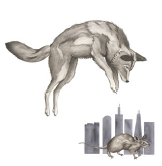 Although the book is rooted in Chicago’s landscape, nature lovers from cities around the globe will find a wealth of urban animal encounters that will open their senses to a new world that has been there all along. Its powerful combination of insightful narratives, numinous poetry, and full-color art throughout will help readers see the city—and the creatures who share it with us—in an entirely new light.
Although the book is rooted in Chicago’s landscape, nature lovers from cities around the globe will find a wealth of urban animal encounters that will open their senses to a new world that has been there all along. Its powerful combination of insightful narratives, numinous poetry, and full-color art throughout will help readers see the city—and the creatures who share it with us—in an entirely new light.
Register for Summer and Fall 2016 Classes at RU
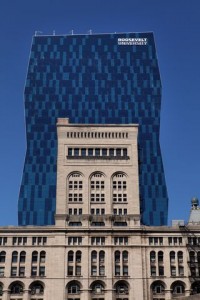 Roosevelt students — Registration for summer and fall classes is currently underway, so now is a great time to contact your advisor, map out your schedule, and get a spot in the classes you need. Check out the line-up of SUST offerings on the SUST blog for this summer and fall, and click on selected titles below for detailed course previews.
Roosevelt students — Registration for summer and fall classes is currently underway, so now is a great time to contact your advisor, map out your schedule, and get a spot in the classes you need. Check out the line-up of SUST offerings on the SUST blog for this summer and fall, and click on selected titles below for detailed course previews.
Sustainability Studies courses offered in Summer 2016:
SUST 210 Sustainable Future (online, May 31 – Aug 15, Prof. Pickren)
SUST 390 Writing Urban Nature (Chicago, May 23-27, yours truly)
Sustainability Studies courses offered in Fall 2016:
ACP 101 Our Sustainable Future (MW, 11am-12:15pm, Prof. Bryson)*
SUST 210 Sustainable Future (MW, 11am-12:15pm, Prof. Pickren)
SUST 210 Sustainable Future (8-week online, 8/29-10/21)§
SUST 220 Water (T, 2-4:30pm)
SUST 230 Food (14-week online, 9/12-12/10)
SUST 240 Waste (Th, 2-4:30pm)
SUST 310 Energy & Climate Change (W, 2-4:30pm, Prof. Pickren)
SUST 320 Sprawl (14-week online, 9/12-12/10, Prof. Pickren)
SUST 330 Biodiversity (Field Museum, Th 9am-1pm, Prof. Kerbis)
SUST 330 Biodiversity (8-week online, 10/29-12/17)§
SUST 350 Service & Sustainability (Eden Place Farm, T 12-3pm, Prof. Bryson)
SUST 390 Environmental Literature & Rhetoric (TTh, 12:30-1:45pm, Prof. Cryer)
* First Year Seminars are open to new full-time undergrads with 12 or fewer hours in transfer credit.
§ These 8-week accelerated online courses are open to all students and synced with the Flex-Track adult degree calendar. They may be taken back-to-back during the 16-week semester.
#RUinFlint this Weekend
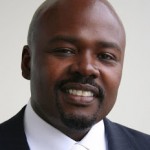 Roosevelt University journalism professor John W. Fountain and nine students in his JOUR 392 Convergence Newsroom class will be in Flint, Michigan, this weekend to report on the Flint water crisis. They’ll also have the opportunity to cover the Democratic candidates’ debate, broadcasting live from Flint on Sunday evening.
Roosevelt University journalism professor John W. Fountain and nine students in his JOUR 392 Convergence Newsroom class will be in Flint, Michigan, this weekend to report on the Flint water crisis. They’ll also have the opportunity to cover the Democratic candidates’ debate, broadcasting live from Flint on Sunday evening.
To follow along with the students’ experiences, just watch Twitter this weekend for the hashtag #RUinFlint.
For questions or more information, contact Dr. Marian Azzaro, Chair, Department of Communication (mazzaro@roosevelt.edu).
